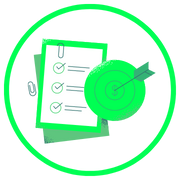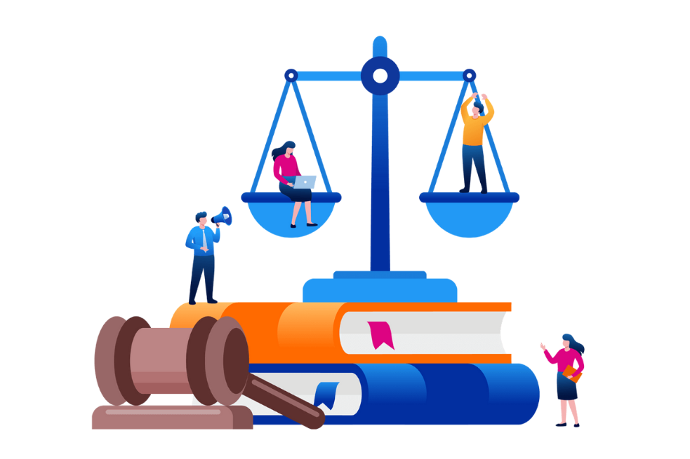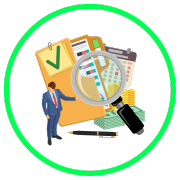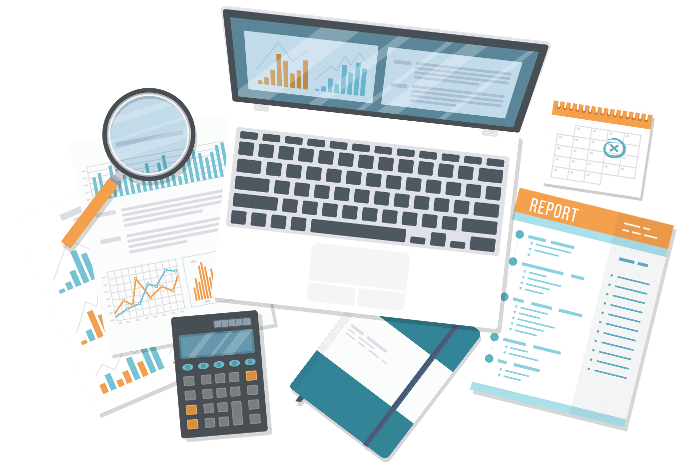
Fixed Asset Audits Services in India
Tax Robo helps you to conduct an effective internal audit of fixed assets with effective Audit Procedures for Fixed Assets and Inventory.
Optimize your fixed asset management with our comprehensive audit services in India. Ensure compliance, accuracy, and integrity in your asset records. Contact us today.
Your Trusted Partner in Audits & CA Services
1. Auditing Services
Internal Audit Services, Stock Audit, Fixed Asset Audits, Concurrent Audits, System Audits, Product Costing, Frame Internal Control.
2. Own Accounting Software: "Accounts Robo ERP"
CRM, Sales, Billing, Accounting, Managing Projects & Inventory, HRMS, Website, and more!
Why Choose Us?
✅ End-to-end support | ✅ Expert guidance | ✅ 100% compliance
Start Auditing Services Today

# No Hidden charges
 Professional CA/CS/CMA Support
Professional CA/CS/CMA Support

Quick Process

100% Compliance Support

Easy Process

All Financial Services in One Place

Tele Support
Fixed Assets Audits
Fixed asset audits involve the thorough examination and verification of an organization's tangible assets, such as property, equipment, machinery, and infrastructure. The primary objective is to confirm the existence, condition, location, and value of these assets, as recorded in the financial records.
- Accuracy: Fixed asset audits help in reconciling discrepancies between physical assets and recorded data, ensuring accurate financial reporting.
- Compliance: Adhering to regulatory standards and internal policies is imperative for organizations. Fixed asset audits ensure compliance with accounting standards and regulatory requirements.
- Risk Mitigation: By identifying potential risks such as asset theft, misplacement, or depreciation, audits help mitigate financial and operational risks.
- Optimized Asset Management: Through audits, organizations gain insights into asset utilization, enabling informed decisions regarding maintenance, repairs, and disposal.
Important Audit Services
Fixed Asset Audit Objective?
1.Verification of Existence:
Confirming that all recorded fixed assets physically exist and are in the locations indicated in the asset register. Visit the designated areas where technology assets are installed or stored.
2.Accuracy of Asset Descriptions:
Verifying that the descriptions of fixed assets in the records accurately represent the assets' characteristics, such as make, model, serial number, and other relevant details. Verify that each asset has a unique identification label or tag affixed to it.
3. Physical Asset Verification
Confirm the existence, condition, and specifications of fixed assets as recorded in the asset register. Conducting physical counts and inspections of assets to verify their presence, condition, and conformity to recorded data.
4.Asset Movements Tracking:
Monitor and document movements or transfers of fixed assets within or outside the organization. Recording changes in asset locations, custodianship, or usage through formal procedures such as asset transfer forms or electronic tracking systems.
5.Insurance Coverage :
Ensure that all fixed assets requiring insurance coverage are appropriately insured. Review insurance policies and documentation to verify coverage for fixed assets, including coverage amounts, types of risks insured against, and policy terms. Protects the organization from financial losses due to damage, theft, or other unforeseen events affecting fixed assets.
6. Documentation and Recording:
Document any discrepancies observed during the physical inspection, such as missing assets, damage, or inaccuracies in asset records & fixed asset register. Evaluating the condition of fixed assets to determine if they are in working order, properly maintained, and fit for their intended use.
7.Measurement of Value:
Determining the correct valuation of fixed assets in accordance with accounting standards, including historical cost, depreciation, impairment, and any changes in fair market value.
8.Identification of Discrepancies:
Detecting any discrepancies between the physical count of fixed assets and the recorded quantities or values in the asset register.
9.Compliance with Policies and Regulations:
Ensuring that the organization's fixed asset management practices comply with internal policies, accounting standards, tax regulations, and other relevant laws.
10.Risk Assessment:
Identifying risks associated with fixed asset management, such as loss, theft, damage, obsolescence, or inadequate insurance coverage. Investigating any irregularities or inconsistencies in fixed asset records that may indicate fraud, mismanagement, or unauthorized transactions.
11.Recommendations for Improvement:
Providing recommendations for enhancing fixed asset management processes, controls, and procedures to mitigate risks, improve efficiency, and maintain compliance.

Technology and Methodology Used for Fixed Asset Audits
-
Mobile Audit Applications:
- Use of mobile audit applications allows auditors to conduct asset inspections directly on smartphones or tablets.
- Auditors can capture asset details, take photos, scan barcodes or RFID tags, and record audit findings in real-time, streamlining data collection and improving audit efficiency.
-
Asset Tracking Software:
- Implementation of advanced asset tracking software enables organizations to maintain up-to-date records of fixed assets and their lifecycle events.
- These systems utilize barcode, RFID, or GPS technologies to track asset movements, monitor maintenance schedules, and facilitate accurate asset valuation.
-
Internet of Things (IoT) Sensors:
- Integration of IoT sensors with fixed assets enables real-time monitoring of asset location, condition, and usage.
- IoT sensors can collect data on asset performance metrics, environmental conditions, and security parameters, providing valuable insights for asset
- management and audit purposes.
4.Blockchain for Asset Verification:
- Utilization of blockchain technology for establishing a decentralized and immutable record of asset ownership and transactions.
- Blockchain-based asset registers provide a transparent and tamper-proof audit trail, enhancing trust and accountability in asset management practices.
5. Artificial Intelligence (AI) for Anomaly Detection:
- Deployment of AI algorithms to analyze large datasets and identify anomalies or discrepancies in fixed asset records.
- AI-driven anomaly detection tools can flag unusual patterns, errors, or potential fraud indicators, enabling auditors to focus on high-risk areas during audits.
6. Remote Sensing Technologies:
- Adoption of remote sensing technologies such as drones or satellite imagery for asset inspections in large or inaccessible areas.
- Remote sensing enables auditors to conduct aerial surveys, capture high-resolution images, and assess asset conditions from remote locations, reducing time and resource constraints.
7. Geographic Information Systems (GIS):
- Integration of GIS technology for spatial analysis and visualization of asset data based on geographic location.
- GIS platforms allow auditors to map asset distributions, identify spatial patterns, and optimize asset management strategies for diverse geographical areas.
8. Machine Learning Predictive Models:
- Development of machine learning models to predict asset maintenance requirements, depreciation trends, or asset lifecycle patterns.
- Machine learning algorithms analyze historical asset data to forecast future outcomes, enabling proactive decision-making and resource allocation.
9. Virtual and Augmented Reality (VR/AR) for Training:
- Use of VR/AR simulations for training auditors on asset inspection techniques, safety protocols, and audit procedures.
- VR/AR environments provide immersive learning experiences, allowing auditors to practice virtual asset inspections and simulations before conducting physical audits.

How does one perform a Fixed Asset Audit by Tax Robo?
It is a good idea that this audit be performed by a professional such as a Chartered Account or a Legal Advisor. It is so because the evaluation & record keeping of fixed assets usually deploys accounting skills and a sound knowledge of property law. Fixed Assets audit will be conducted based on the Indian Accounting Standard (AS) 10 - Fixed Assets Accounting.
Step 1: Physical observation
This is simple. An auditor observes the assets with their eyes and notes down valuable details such as location of the property, size (for lands & buildings), date of purchase, value at the time of buying, ownership documents, property tax compliances (land & buildings), receipt of purchase & serial no. (for equipments) and other important details.
Step 2: Creating a log book
All the assets accounted for are entered into a journal and every detail is noted down. Relevant documents are attached & stored along with the entry of each asset.
Step 3: Calculation of Current value & Depreciation
Assets appreciate in monetary value with time, while some of them depreciate. Some of the fixed assets (equipement, machinery etc.) lose their value as they age, due to wear, tear, or due to emergence of a better technology.
It is therefore important to calculate the current value of a fixed asset in order to decide whether continued usage with maintenance or selling the asset is economically wise.
Tax Robo helps you with your fixed asset audits. Our legal experts take away all the hassle of generating and maintaining a log of your fixed assets. With our assistance, you can live peacefully knowing your fixed assets are accounted for and taken good care of.
Auditing Services In India
 Internal & Management Audit
Internal & Management Audit
 Stock Audit
Stock Audit Fixed Asset Audit
Fixed Asset Audit Concurrent Audit
Concurrent Audit System Audit
System Audit Documentation Works
Documentation Works
How it Works
Stage 1
✓ You fill out the inquiry form.
✓
The client relations team calls or emails you.
Stage 2
✓
Understanding of requirements.
✓
Ballpark estimate (if possible).
✓
Proposal (if required).
✓
Approval to go ahead.
Stage 3
✓
Confirm pricing
✓
Contracting & SLA sign-off
Stage 4
✓
Resource deployment & training
✓
Project kick-off meeting
Stage 5
✓ Project execution & management
✓
On-going reporting & feedback
Stage 6
✓ Work delivery to the client
✓
Client feedback and review

Compliances of Statutes
- TDS Compliances
- Services Tax Compliances
- PF & ESI Compliances
- Professional Tax Compliances
- Income Tax Compliances
- Others Statutory Compliances
Fixed Asset Controls
- Fixed Asset Accounting
- Fixed Asset register Maintenance – with Location
- Asset Deletion Accounting & Recognition
- Insurance details for Fixed Asset
Analysis of Various general Ledger Transactions and Balances
- Setup an Internal Controls System for smoothening the functions
- MIS Reports for Management
- Collections and Follow-ups in Excel data Sheet
- Budgetary Controls
- Documents Maintenance Controls and Supports
Tax Robo Team and Process
- Surprise Verification
- Associated Firms In Tamilnadu
- Strength Is Our Branches

Various Internal Controls
Preventive Controls
Segregation Of Duties: Duties Are Segregated Among Different People To Reduce The Risk Of Error Or Inappropriate Action. Normally, Responsibilities For Authorizing Transactions (Approval), Recording Transactions (Accounting) And Handling The Related Asset (Custody) Are Divided.
Approvals, Authorizations, And Verifications: Management Authorizes Employees To Perform Certain Activities And To Execute Certain Transactions Within Limited Parameters. In Addition, Management Specifies Those Activities Or Transactions That Need Supervisory Approval Before They Are Performed Or Executed By Employees. A Supervisor's Approval (Manual Or Electronic) Implies That He Or She Has Verified And Validated That The Activity Or Transaction Conforms To Established Policies And Procedures.
Security Of Assets (Preventive And Detective): Access To Equipment, Inventories, Securities, Cash And Other Assets Is Restricted. Assets Are Periodically Counted And Compared To Amounts Shown On Control Records.
Detective Controls
Detective Controls Are Designed To Find Errors Or Irregularities After They Have Occurred. Examples Of Detective Controls Are:
- Reviews of Performance: Management compares information about current performance to budgets, forecasts, prior periods, or other benchmarks to measure the extent to which goals and objectives are being achieved and to identify unexpected results or unusual conditions that require follow-up.
- Reconciliations: An employee relates different sets of data to one another, identifies and investigates differences, and takes corrective action, when necessary.
- Physical Inventories
- Audits